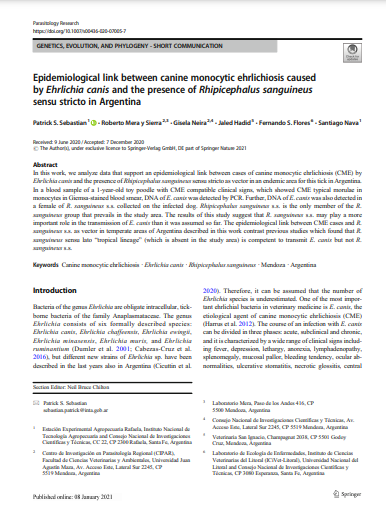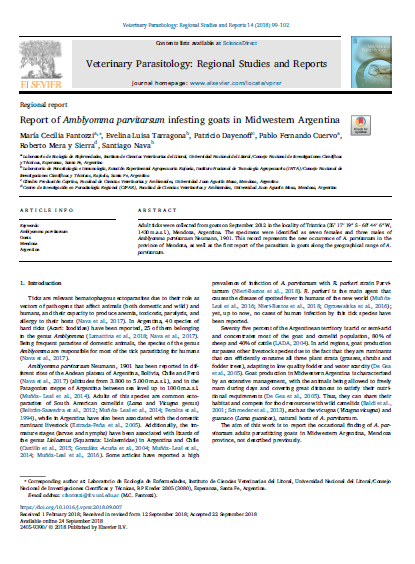Browsing by Author "Nava, Santiago"
Now showing items 1-2 of 2
-
Epidemiological link between canine monocytic ehrlichiosis caused by Ehrlichia canis and the presence of Rhipicephalus sanguineus sensu stricto in Argentina
Sebastian, Patrick; Mera y Sierra, Roberto; Neira, Gisela; Hadid, Jaled; Flores, Fernando; Nava, Santiago (Parasitology Research Editorial, 2021-01-08)In this work, we analyze data that support an epidemiological link between cases of canine monocytic ehrlichiosis (CME) by Ehrlichia canis and the presence of Rhipicephalus sanguineus sensu stricto as vector in an endemic area for this tick in Argentina. In a blood sample of a 1-year-old toy poodle with CME compatible clinical signs, which showed CME typical morulae in monocytes in Giemsa-stained blood smear, DNA of E. canis was detected by PCR. Further, DNA of E. canis was also detected in a female of R. sanguineus s.s. collected on the infected dog. Rhipicephalus sanguineus s.s. is the only ... -
Report of Amblyomma parvitarsum infesting goats in Midwestern Argentina
Fantozzi, María Cecilia; Tarragona, Evelina Luisa; Dayenoff, Patricio; Cuervo, Pablo Fernando; Mera y Sierra, Roberto; Nava, Santiago (Comité editorial Veterinary Parasitology, 2018-09-24)Adult ticks were collected from goats on September 2012 in the locality of Trintrica (35° 17′ 19″ S - 68° 44′ 6″ W, 1430 m.a.s.l.), Mendoza, Argentina. The specimens were identified as seven females and three males of Amblyomma parvitarsum Neumann, 1901. This record represents the new occurrence of A. parvitarsum in the province of Mendoza, as well as the first report of the parasitism in goats along the geographical range of A. parvitarsum.











